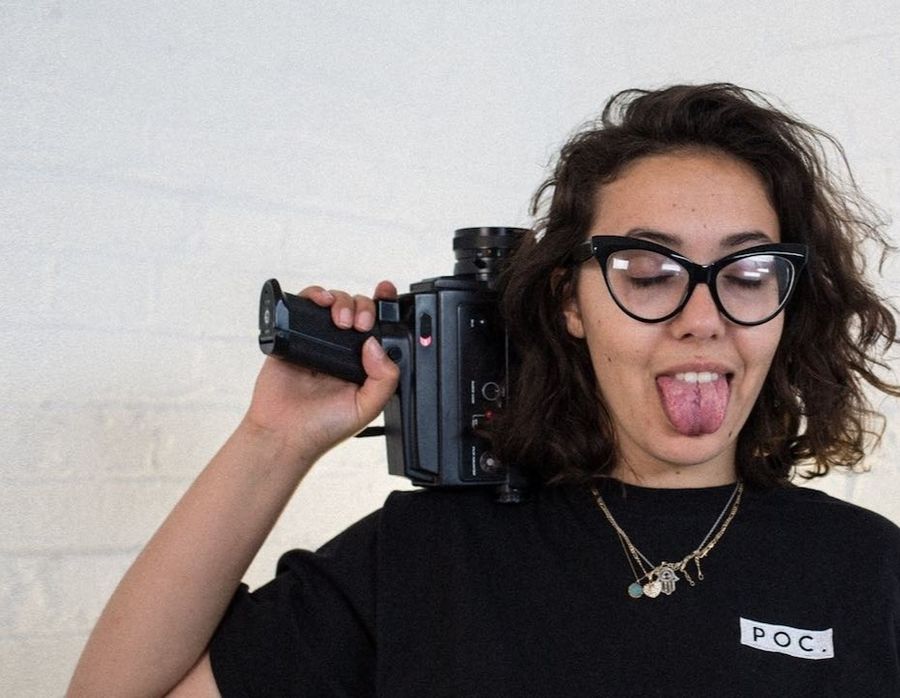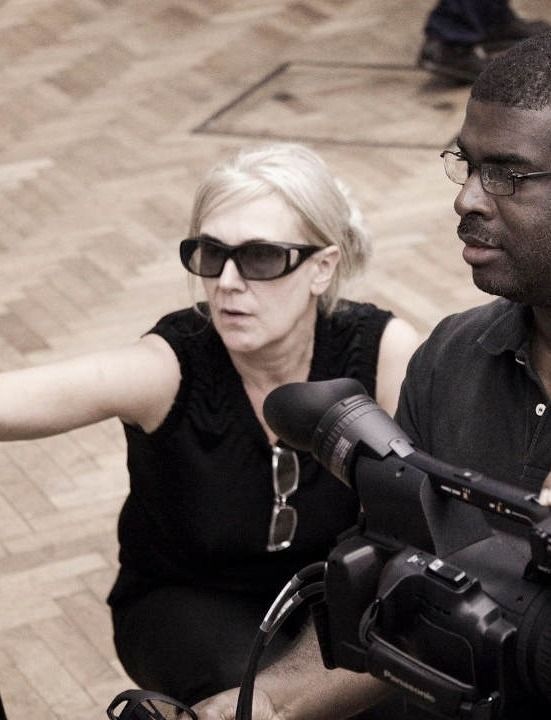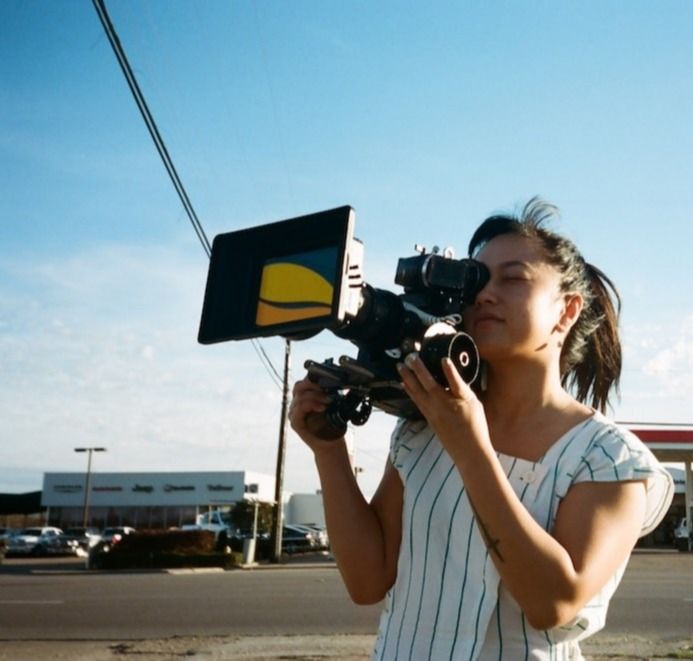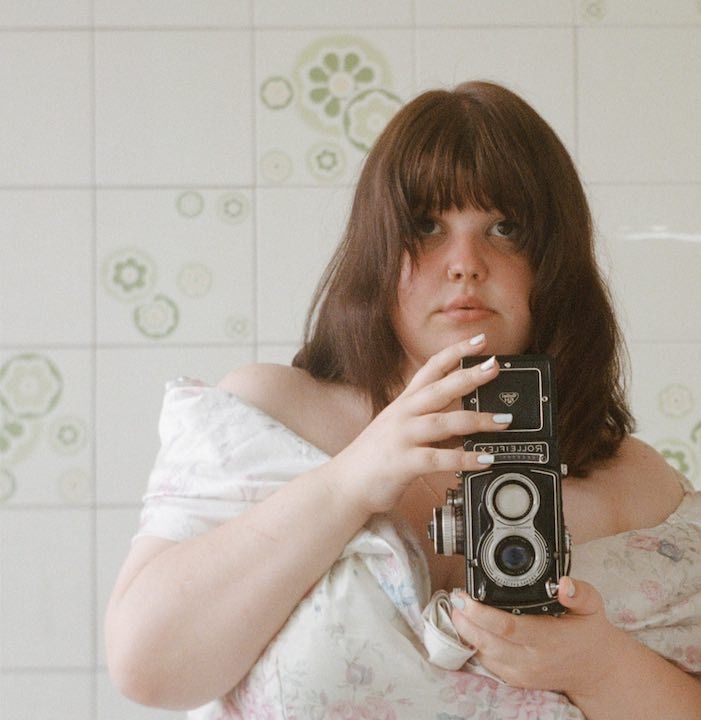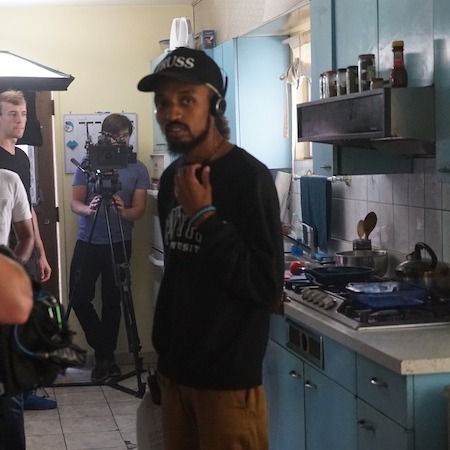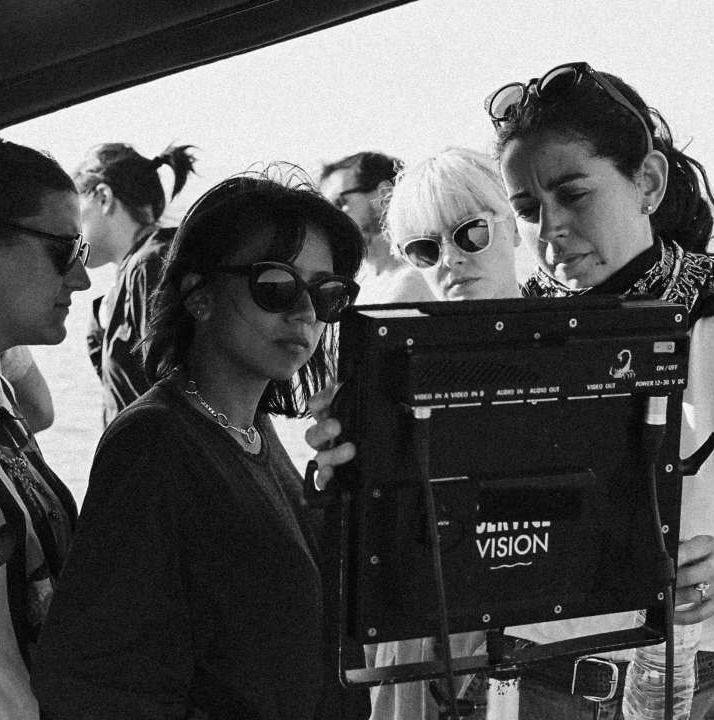When director Nadira Amrani was first introduced to South London’s British-Nigerian MC Flohio, she knew she had found the long-awaited subject for the contemporary take on a classic tale that she had been working on. “Wow,” Nadira recalls thinking, “I’ve found Icarus, and she’s a woman.”
Flash forward two years, and the result of their collaboration, Nadira’s BFI Film Festival-premiering short film “Fly,” is a fascinating update of the Greek myth of Icarus and Daedalus. Charting a young hip-hop artist on her rise to fame, the film meshes Flohio’s performances and conversations with surreal imagery, including a memorable winged walk through the Tate Gallery. The film meditates on artistry and ownership of one’s own creative voice, finding new resonance in an ancient story.
We spoke to Nadira about her appreciation for London architecture, creating a film collective (POC, People Of Colours) where directors of color can showcase their work to a live audience, and how life acts as her casting agent.
Your short film “Fly,” is a modern re-telling of the story of Icarus, starring female MC Flohio. What elements of the original story compelled you to adapt it to the present day?
Nadira Amrani: I guess my starting point to the story of Icarus was to learn about Greek mythology at school. It’s a tragedy that has always stayed with me, and it coined the idiom, “don’t fly too close to the sun.” In the original, Icarus and his father Daedalus are banished to the island of Crete, where Daedalus made a pair of wings for his son out of feathers and wax. It’s this warning that Daedalus gives his son that really is the backbone of the film—Flohio has a phonecall from her mum in this version. In the film, the sun represents fame and being too exposed as a successful artist, while the water represents not making it. The whole film is about trying to navigate the difficulties of being successful without being burnt.
How were you first introduced to Flohio, and how did you begin working together on the film?
Like all great meetings, I found Flohio on Youtube. I found a music video for the track “SE16” almost two years ago, and just thought, “Wow, I’ve found Icarus and she’s a woman.” I went to Flohio’s gig at Jazz Cafe, watched her electric performance, and approached her with this mad film idea. To my surprise, Flohio was really up for it, as she’s a brilliant actor and artist and was interested in the surreal performance.

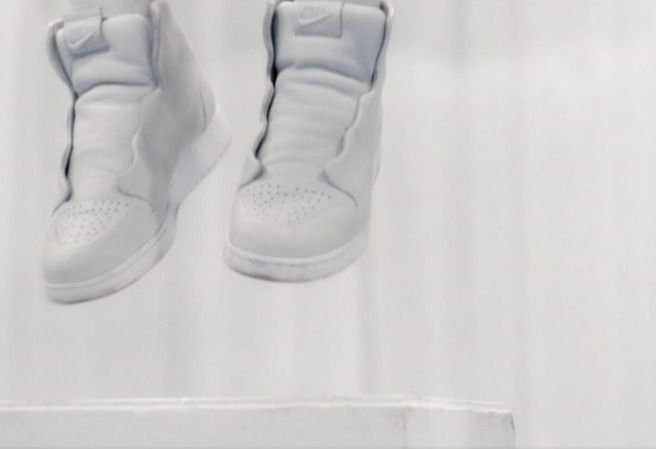
How was this short film funded? What was the process of bringing it from idea to shoot to completed film?
It first started as a poem, which was inspired by the Stormzy controversy with the Brits three years ago. After writing the poem it developed into a script that explored a male grime artist’s perspective of navigating the music industry through the story of Icarus. I then started to develop the character and idea with a talent lab called B3Media, which supported diverse directors. After that, I took a break from the script.
It was then, four months later, that I found Flohio online by chance and rewrote the script with her. For me, there was something missed with the idea of keeping Icarus a man. Going to see her live and perform really inspired me to get back to the film. I submitted the script to Film London’s London Calling scheme, and at the same time, Blink had scouted me down as a potential director, and it all just came together! We shot it in February this year. It premiered at the BFI Film Festival this October.
The film takes somewhat of a magical realist approach, framing an authentic-feeling vision of London through a fantastical lens. How did you keep the film’s naturalistic elements grounded in reality while still weaving in some of its more fantasy elements?
Well, in some parts the film is real. Flohio is a real artist, and a lot of the scenes were filmed almost like a documentary, so that added this real element. I think I found this mix of script and improvised lines really interesting to work with. I like blurring the lines between genres of film, and also not allowing the viewer to really know what will happen next.
The fantasy element really came from the wings itself. I always knew in my head I wanted this scene of her walking down the street with wings, coming out of the barber’s as everyone looks at her thinking, “What the hell?”
Ideally, after a while in the film, we actually normalize them. The wings are a metaphor for success growing, as she becomes ready to fly, to be free.

How does “Fly” reflect your own personal vision of London, and its music/ art scene in particular?
I’m not originally from London—though I’ve lived here for eight years—but always came here during my childhood to stay with family, so in many ways, it feels like my home. I studied architecture at UCL and while I was studying, worked at Whitechapel art gallery as a gallery assistant. I’ve always looked up in London; I’ve looked up at buildings’ architecture and I think about materials and color. I guess you can see elements of that architectural gaze at the beginning of the film.
I remember being in the Barbican with Caleb Femi at the beginning stages of development and saying, “The beginning needs to feel like you’re actually flying.” I think the scene in “Fly,” inside the Tate Gallery was very interesting, as I actually met up with Flohio at a Tate Late before rewriting the script. I remember Flohio telling she worked as an intern at the Tate, and so we kinda joked about filming in the Tate Britain—very naively, obviously, not thinking about the logistics of getting permission to do such a thing. I’ve always worked and felt safe in art galleries and big spaces, so it was important to have it in the right place. It also was a great background to mix this classical tale in a modern day. I escape in galleries. It doesn’t matter if I’m in Morocco, Colombia, or Italy, I will always feel safe in big white spaces. And yet, the height of a plinth is quite scary. I just so happened to shoot at an advert for the Tate Britain the month before shooting.
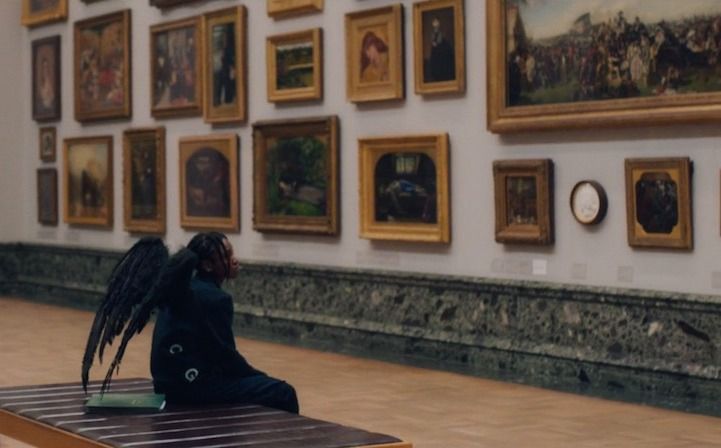
What light does this film’s central metaphor (a woman MC gains her wings as she takes command of her creative voice) shed on ideas of female artistry, in a general sense?
I think the metaphor is just be yourself; work hard, but don’t get stuck looking at your following or who can see you. Be brave.
I guess, in a way, it’s also my story as a director. I am also Icarus. We all are. Wanting to do well, but being scared of failure, having to go through painful growth, and being brave with your ideas.
Did this film allow you to experiment with any aspects of filmcraft (technically? aesthetically?) that were new to you?
100%—I think the film’s approach was very experimental for me, and ultimately had a massive learning curve. We had a script, but we really ended up off script for a lot of it. I think it was an opportunity for us to really be free in what we were trying to make. Each scene was like a chapter, but as a film, it almost feels a bit like a dream—the end definitely has some nightmarish qualities to it.
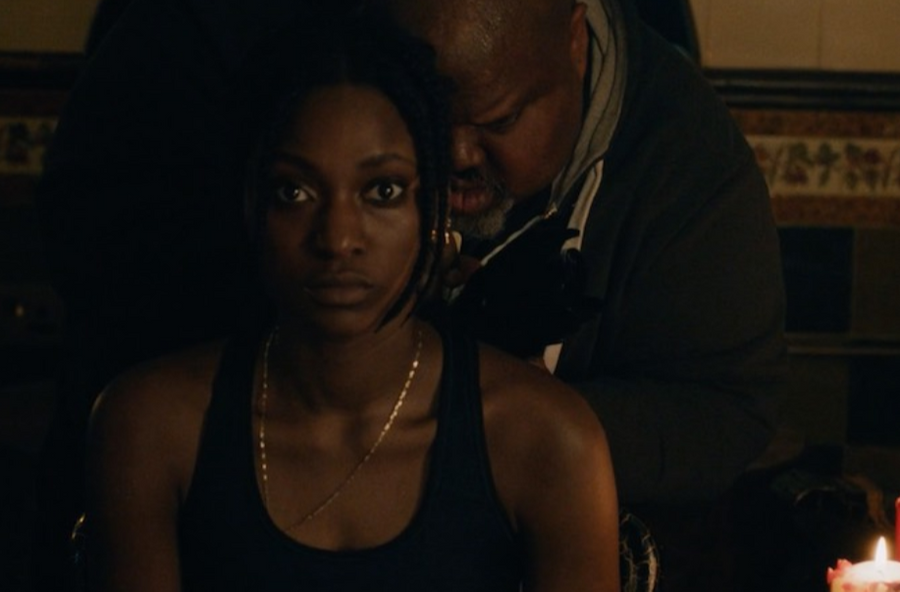
Already, over the course of your relatively short career so far, you’ve been a champion for authentic depiction of subjects from historically underrepresented communities. How do you personally use filmmaking as an avenue for storytelling that shines a light on these communities? How does your own background play into the kinds of work you’d like to create?
For me, diversity is so important, but is often an overused, oversimplified term. Do we mean age? Do we mean gender? Is being queer diverse? Are we talking about race? I think my work literally just reflects my surroundings. I am a product of my environment and my environment happens to be very creative and multicultural. There’s no deliberate casting there, I just happen to be a part of a very vibrant, talented, racially diverse creative scene. A lot of the people I have collaborated with are my peers, who I have found or met organically, whether it’s online or in real life. I think it’s funny that I’m often asked what casting director I use. I reply, “LIFE!” I don’t have to look for interesting people to put in my films—I’m literally surrounded by them.
How does the commercial work that you’ve been able to do inform or supplement your personal work as a director?
I think the very fact you have to make a commercial in 60 seconds definitely helps you, as a director, to communicate an idea quicker.
I actually love shooting commercials. There’s a beauty in being so concise. It’s also a brilliant way to explore transitions and being creative in scripts. The Black Pride campaign was really fun to make, and was definitely influenced by my love for portrait photography. I’m looking to do more creative, adventurous campaigns, and that’s exactly why I signed to Blink. Their work is so fresh and zingy—when I watch a Blink campaign on telly, I’m always like, “Yep, that’s Blink!”
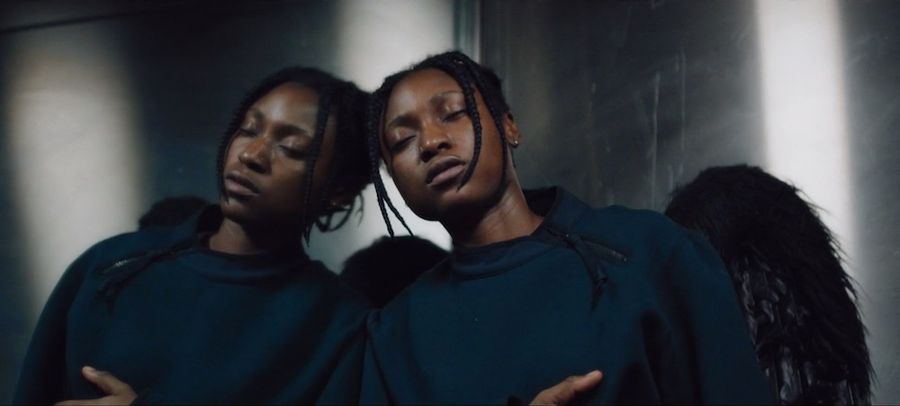
Tell us a bit about POC (People Of Colours), the collective that you founded. What are some of the collective’s efforts so far that you’ve been most proud of?
So POC (People Of Colours) is a collective of directors of color that I started around two years ago. It’s a physical and digital space, via the Instagram, that showcases and celebrates POC director talent. We’ve curated screenings at the Tate Modern, ICA, BFI, V&A, as well as the Ace Hotel. These events, in many cases, are a director’s first chance at showcasing their work in a physical space with a Q & A.
With the Instagram creative scene booming, there are so many POC directors in the digital space, but there seemed to be a disconnect to the London physical film industry. Through open submission, the space is designed to connect talent to a physical audience. It’s meant to be a non-competitive space where we can guide and help each other. I guess it can be a bit anti-climactic to just upload a film you spend hard cash, creative energy, and time on into the internet. You want to see what it’s like to be in a room full of people, as everyone watches for the first time. We invite people from the industry into this space, and organically you can see how the two connect.
People talk a lot about diversity, but if you look at the statistics, the number of POC directors signed to major production companies is still so low. Yet how is it that our treatments and cast seem to be full of POC talent? It just doesn’t add up. Becoming a director is difficult. Becoming a female director is harder. Becoming a POC director is harder still.

What’s next for you?
I just want to make more and more films. I want to live on set. I’m writing a feature, which I think I’ll develop over the next two years. I just want to shoot more music videos, surreal shorts, and more commercial campaigns. I want to shoot a queer Ikea advert, a dance film for Clarks, I want to make an amazing film for a YSL campaign in Algeria—yes, his birth place. I’m just putting that into the universe and in this article.
Finally, do you have any advice that you’d like to pass on to aspiring directors who’d like to follow in your footsteps?
Just do it. Really, without sounding too much like a Nike ad . . . get a cheap camera and go. You have the ability to learn anything. I think it’s one of my pet hates when women say, “I don’t know how to do . . . ” like we were born definitely with or without skills. It’s really important to know and remind yourself you have the ability to learn anything. Teach yourself to edit by watching Youtube videos, and go and make a film. It will be shit. Everyone’s first film is bad. So make another film. Then another. Then another, and then you will be a director. And if you love it, someone will notice. Also, Instagram is extremely helpful. Also, be nice to people. Being a good director isn’t about yelling at people—it’s about being a good communicator, and good communicators listen. Just make sure you’re also listened to.
